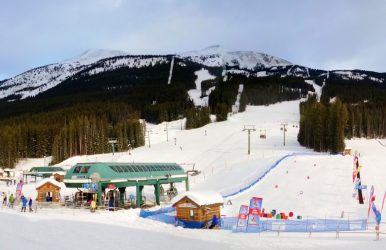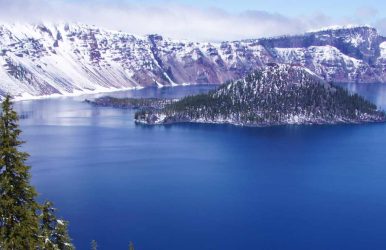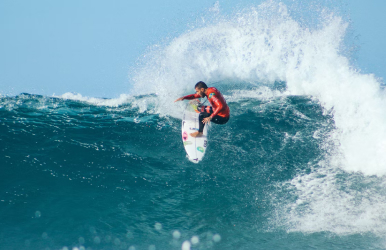Top 9+ Things To Do In Banff National Park In Winter: Adventure Tourism Guide
BY Sibashree Nov 11, 2024
No park in the Rockies in Canada is as beautiful as the Banff National Park. This park has a year-round allure. So, no wonder the park had 4.288 million visitors in the 2023-24 fiscal year. However, Banff National Park is breathtaking in the winter. With an average annual snowfall of 181 inches, the park also offers thrilling winter activities. Banff National Park Visitor HighlightsBanff National Park had 4.13 million visitors in the 2022-23 fiscal year. So, 2023-24 has seen a massive increase (31%) in the footfall.The traffic congestion in the area has increased with the most traffic in the Lake Louise area. In 2023, there were 2,547 reports of human-wildlife encounters in this national park. So, you must be respectful to the wildlife in the park. Further, Banff National Park and its surrounding areas expect 10-15 cm of snow in October 2024. The higher terrains can even receive a snowfall of up to 25 cm. So, Lake Louise, Sunshine Village, and other ski resorts in the area have started preparing for the winter ski season. These resorts consider this snowy condition ideal for better winter tourism and activities. So, let’s find out the outdoor pursuits you can participate in at Banff National Park this winter. You Surely Don’t Want To Miss These Winter Activities At Banff National Park Winter calls for an immersive experience in the Canadian Rockies. Banff National Park is not an exception. You can enjoy a casual stroll along the snow-covered streets. Further, you can just cherish the snowy beauty while sipping on your favorite hot chocolate drink. Of course, there are delightful activities like ice skating in the frozen lake, skiing, and snowboarding. However, before putting on your skiing shoes and gear, you must check the snow conditions in the park and at a particular resort. Nevertheless, let’s talk about the activities without further ado! 1. Skiing And Snowboarding Banff National Park offers some world-class skiing and snowboarding facilities. In fact, the skiing season here is one of the longest in North America. The skiing season starts here from the end of November until May. It is phenomenal, indeed! Further, it does not matter whether you have not done skiing and snowboarding before. You can give it a go, thanks to the guidance and rentals available here. However, if you are not confident enough, you can just get a sightseeing tour ticket and explore the park. The three skiing resorts in Banff National Park are: Mt Norquay (10 Minutes Away from Town) Banff Sunshine (20 Minutes Away from Town) The Lake Louise Ski Resort (40 Minutes Away from Town) You can try skiing at all the resorts or at least visit one during the cold season. You have to pay a nominal fee to ski at these resorts. However, if you need guidance or rentals, you must pay extra charges. Nevertheless, here is a snapshot of the admission fee to the park for your reference. Moreover, if you want to visit a particular ski resort, you can buy lift tickets. However, if you have plans to visit all the resorts, go for the SkiBig3 tickets for a better deal. 2. Ice Skating Ice skating rinks in Banff National Park are free, and Lake Louise is the best spot in the park. It is a Canadian dream to ice skate on the frozen lake. Also, you can take part in Pond Hockey here. Further, you can enjoy the snow-capped beauties while enjoying your time at the Lake Louise Ice Skating Rink. The mountains around this lake are: Mount Whyte Mount Niblock Hungabee Mountain Mount Godor Fairview Mountain Mount Goodsir Moreover, you will love the ice castle at the Lake Louise ice skating rink. Don’t forget to take lovely snaps against the backdrop of this ice castle. 3. Snowshoeing/Winter Hikes Snowshoeing and winter hikes are two different activities. However, both make winter in Banff National Park very special. So, check out the following snowshoeing hotspots in the national park. Lake Louise Marble Canyon Johnston Canyon to Upper Falls Sunshine Meadows Sulphur Mountain Trail Bow Glacier Falls Sulphur Mountain Trail is also a popular hiking route in the park in winter. Here are some hiking trails in the park in winter. Tunnel Mountain Summit - Moderate, 2.4 Km one-way Stewart Canyon - Easy, 1.5 Km, one way Sundance Canyon - Moderate, 3,7 km one way plus 2.1 km loop Spray Connector - Easy, one way 2 Km Marsh Loop, Easy, 2.8 Km loop However, winter is within the avalanche season in the park. The Avalanche Season in the park continues from November to June. You can even reach the Avalanche Terrain after a short walk. So, follow the Avalanche Danger Signs and Avalanche Symbol while trekking in the park in winter. 4. Dog Sledding Dog Sledding is a great way to explore the park in winter. The mighty and energetic huskies will make your day. While exploring the park, you will also learn about its history and why it is so crucial for the community and locality. In addition, your musher or guide will explain the dog sledding technique to you. Moreover, dog sledding is a popular activity in Banff National Park during the SnowDays Event in January and February. It is a celebration of Everything Winter in Banff. 5. Relax In Upper Hot Springs Hours of Operation: 10 am to 10 pm (Last entry: 9:30 pm) It will be the most relaxing experience for you to soak in the warm water of the Upper Hot Springs on Sulphur Mountain in the chilling winter. You can kinda call it a Canadian tradition. So, no wonder that it has been one of the best things to do in Banff National Park in winter since 1886. Banff Upper Hot Springs has 100% natural mineral water. Take a dip in the outdoor pool as you behold the Cascade and Rundle Mountain peaks. Moreover, don’t forget to visit the Bath House, which is a federal heritage building that houses some interpretive exhibits. These exhibits tell you about the history and nature of the hot springs. Did you know that Upper Hot Springs is the highest operational hot spring in Canada? 6. Ice Climbing Banff National Park is one of the most popular destinations for ice climbing in the Canadian Rockies, along with Jasper and Kootenay National Park. November to April is the best season for ice climbing in these parks. Easy access and reliable conditions are two factors promoting ice climbing in these parks. In Banff, the canyons and waterfalls are especially brilliant spots for ice climbing. The most visited spots for ice climbing in this park are: Johnston Canyon Professor Falls Louise Falls Weeping Wall Polar Circus Cascade Falls However, ice climbing requires avalanche training, and you must abide by safety guidelines. 7. Wildlife Spotting In May 2024, the Rocky Mountain Outlook came with disturbing news of Wildlife Paparazzi putting pressure on the Grizzlies of Banff National Park to take snaps. This is a sheer disrespect of wildlife and a form of hunting trophies in the form of photos of those animals. “With cell phone cameras, the digital photos of wildlife have become the 21st Century equivalent of hunters going out and bagging an animal that they can hang on their wall.”Brian Spreadbury, Former Human-Wildlife Conflict Supervisor, Lake Louise Nevertheless, exploring the wildlife of Banff National Park in winter is a delightful experience. It is most famous for the black and grizzly bears. Further, you will find bighorn sheep, cougars, moose, elk, and wolves here. However, you have to be at the following sports to explore wildlife here. Icefields Parkway Bow Valley Parkway Lake Louise Moraine Lake Vermilion Lakes You will also find many small mammals like chipmunks and squirrels in Banff National Park. Moreover, with bald eagles and hundreds of bird species, this park is a birder’s paradise. 8. Snow Tubing Snow tubing is an exciting winter activity that takes place at the Mt. Norquay Ski Resort. It is open daily from 10 am to 4 pm. Further snow tubing activities happen in two different time slots. The first slot is from 10 am to 12:30 pm, and the next slot is from 1:30 pm to 4 pm. The snow tubing park in Mt. Norquay is the largest in Alberta. Moreover, the eight sliding lanes in the park let you enjoy the activity with your friends and family. 9. Northern Lights Viewing Late September to April is the best time for northern light viewing in Banff National Park. Longer nights and clear skies during these months are the best times for stargazing and northern light watching. Vermillion Lakes in the national park is easily accessible by car and on foot. It is the best location for watching the Northern Lights. 10. Attending Festivals and Events Along with the SnowDays Festival, many events transform Banff National Park into a festive hub. You can attend the following upcoming events in the park. Event Upcoming Date Banff Centre Mountain Film and Book Festival26th October - 3rd November, 2024Power of Presence - Wellness Retreat1st-3rd November, 2024Embrace Joy - Your New Freedom - Wellness Retreat7th-10th November, 2024Banff Wine & Yoga Festival 8th-11th November, 2024Banff Sunshine Community Ski Day6th December, 2024Mt Norquay Community Ski Day7th December, 2024Lake Louise Community Ski Day8th December, 2024SnowDays Play ZoneJanuary 2025Aerial Yoga Teacher Training16th-19th January 2025SnowDays Festival17th January-2nd February So, get geared up for winter fun at Banff National Park. You can reach the park from Calgary through a shuttle service. Also read Why Include Whale Watching In Your LA Itinerary. Traveling On A Budget: Tips For Affordable Adventures. From Cocktails To Kickflips: Must-Try Activities In San Diego.














